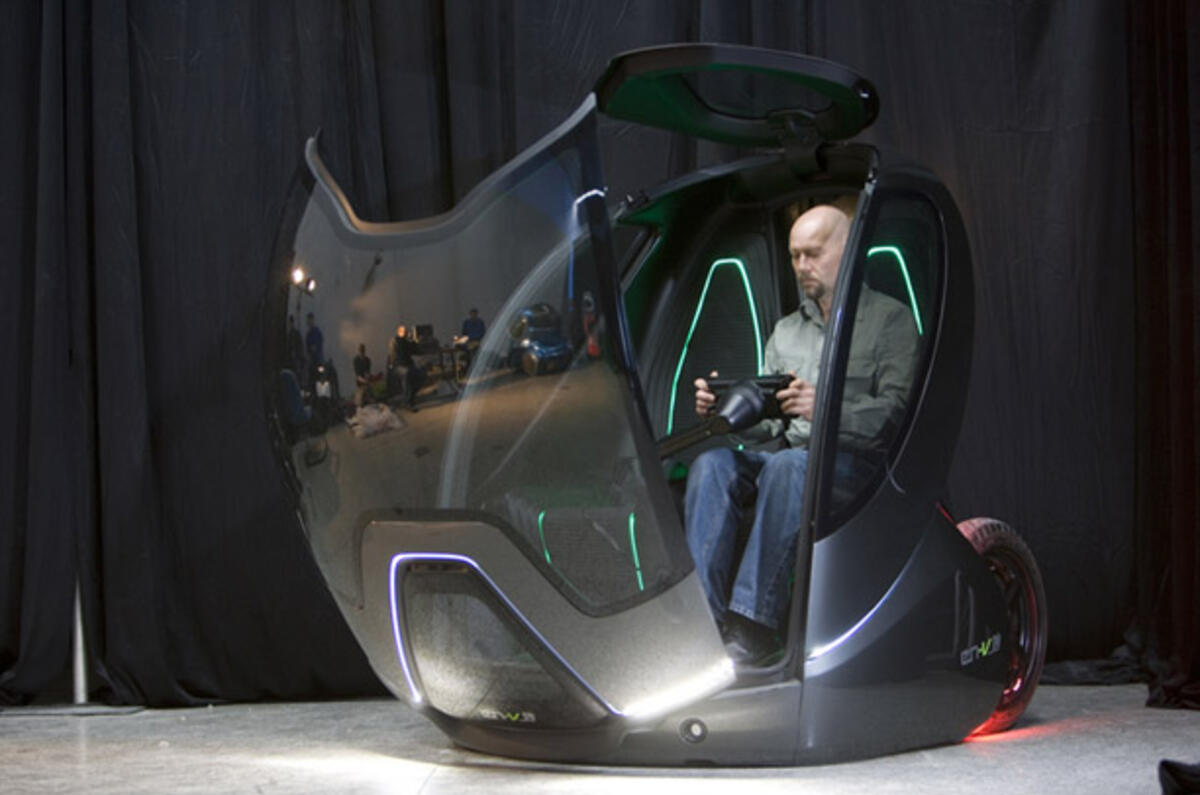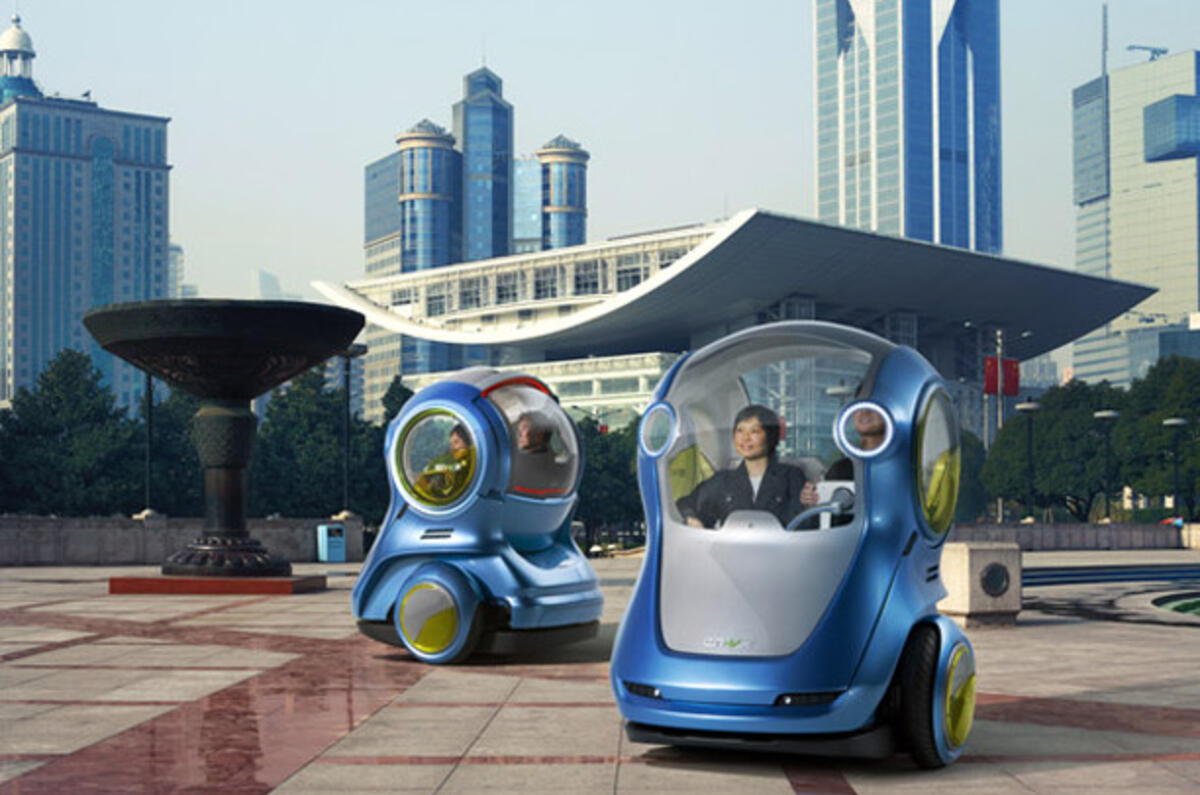This is the EN-V concept car, an upright two-seat urban runabout that promises a brighter, cleaner, cleverer and more convenient future for the city car.
Hailed as General Motors's most significant concept since the Chevrolet Volt, the EN-V has been designed and developed with its Chinese joint venture partner SAIC.
See pictures of the GM EN-V concept car pictures
Matt Saunders blog: Up close with the car of tomorrow
Three versions of the EN-V concept car have been designed, but each is based on the same mechanical platform. Each is roughly six feet tall, four feet wide and four feet long.
Each variant seats two occupants side by side and has a wheel at both ends of the lateral centre line of the car. Each wheel is powered by a 3kW electric motor drawing power from a battery of lithium ion cells.
GM says the EN-V will do around 25mph flat out and has a 25-mile range on a full charge, but claims that both of those figures will be sufficient to make the car suitable for use in traffic-jammed 21st-century cities, where you could fit four EN-Vs into the same road space taken up by a typical family car.
This concept has been three years in the making, and adopts Segway mechanicals as the basis for its propulsion system. However, unlike on a Segway, where the rider controls forwards and backwards movement of the vehicle using just his balance interpreted by a series of gyroscopic sensors, the EN-V’s driver sits normally, using a by-wire steering system, hand-operated accelerator and brake.
That’s because the EN-V automatically shifts its weight front to rear by electrically adjusting the position of its body relative to its chassis below. It therefore has the ability to instinctively and automatically balance on only one axle like a man on a unicycle, and is much more manoeuvrable than cars with two axles. It can turn 180 degrees within its own body length, and be parked in the most restricted urban spaces.
The EN-V is also capable of both ‘vehicle-to-vehicle’ and ‘vehicle-to-network’ communication, and can read, interpret and understand both its location and the road ahead using its GPS system, as well as various transceivers and cameras on its body.
The EN-V can be ‘fully autonomous’: it could drive you 10 miles to work, drive itself home again to charge, and be back to collect you at 6.00pm. Thanks to its ‘vehicle-to-network’ connectivity, you could even work while it drove you home.
























Join the debate
Add your comment
Re: GM EN-V concept revealed
styling = helmet.
Utter nonsense. This concept only works if everyone drives (not sure drive is the right verb any more) one. Another thought - how does it deal with speed bumps / potholes, and can it use the cycle lane?? ;-)
Re: GM EN-V concept revealed
Re: GM EN-V concept revealed